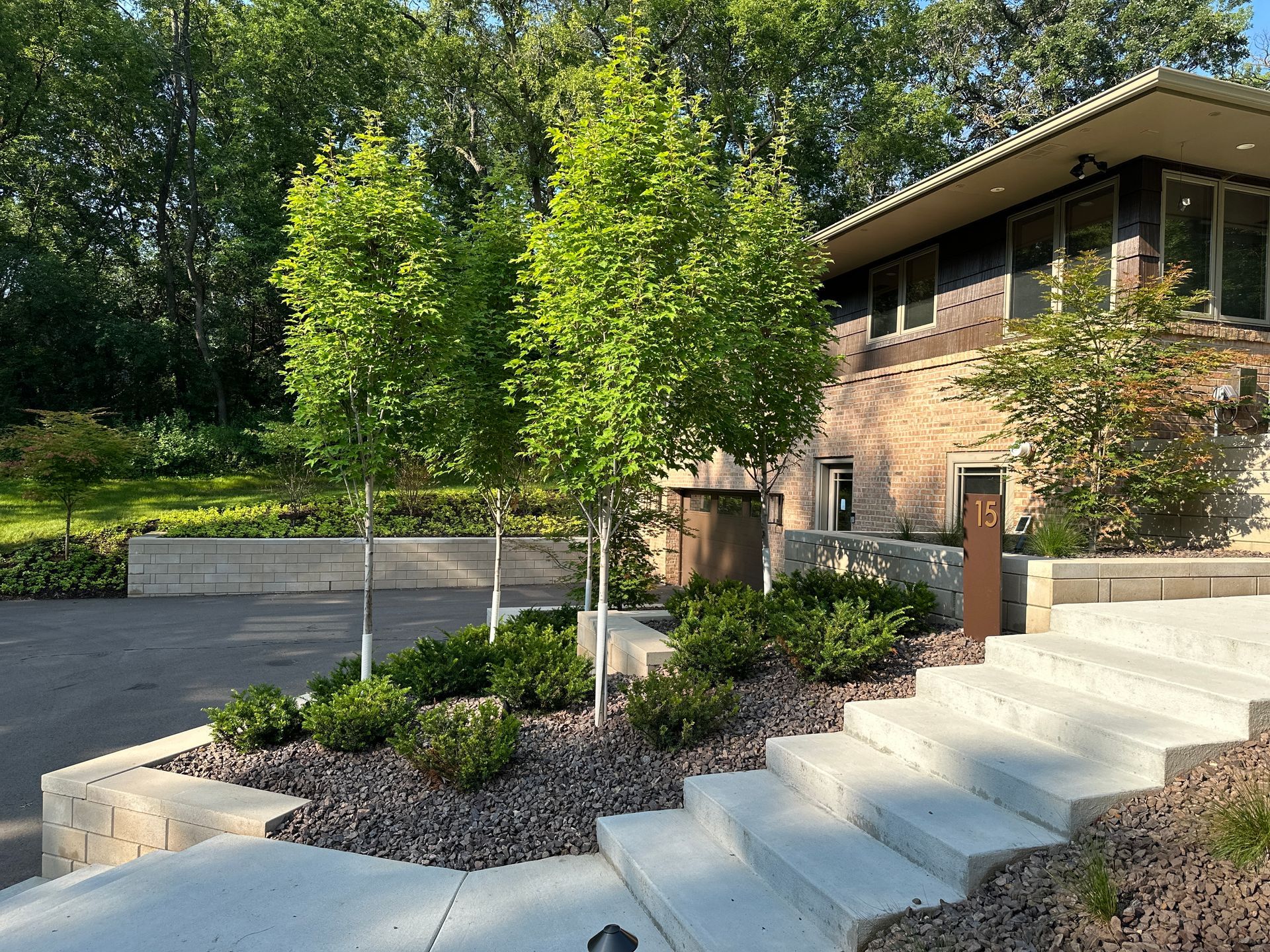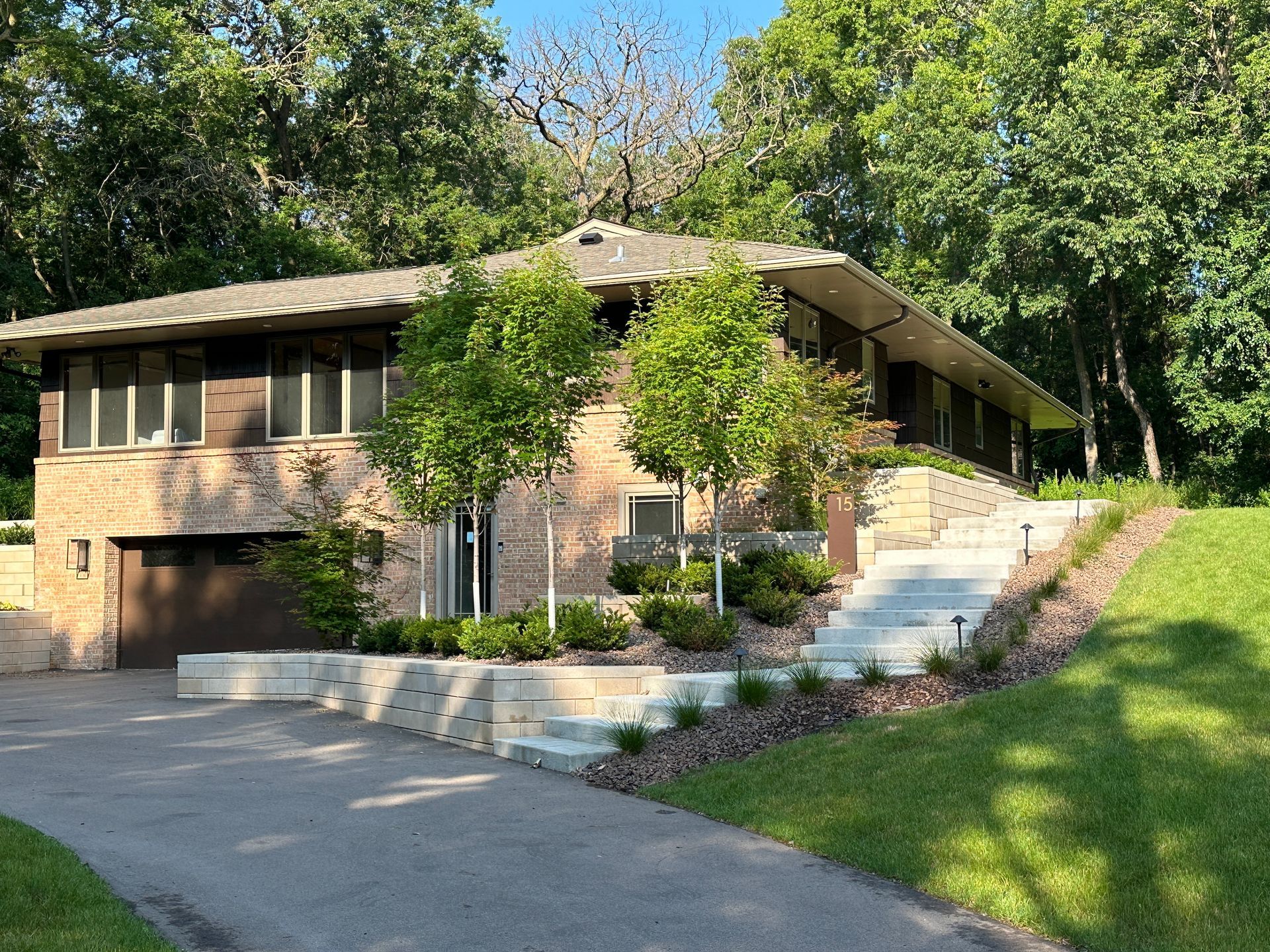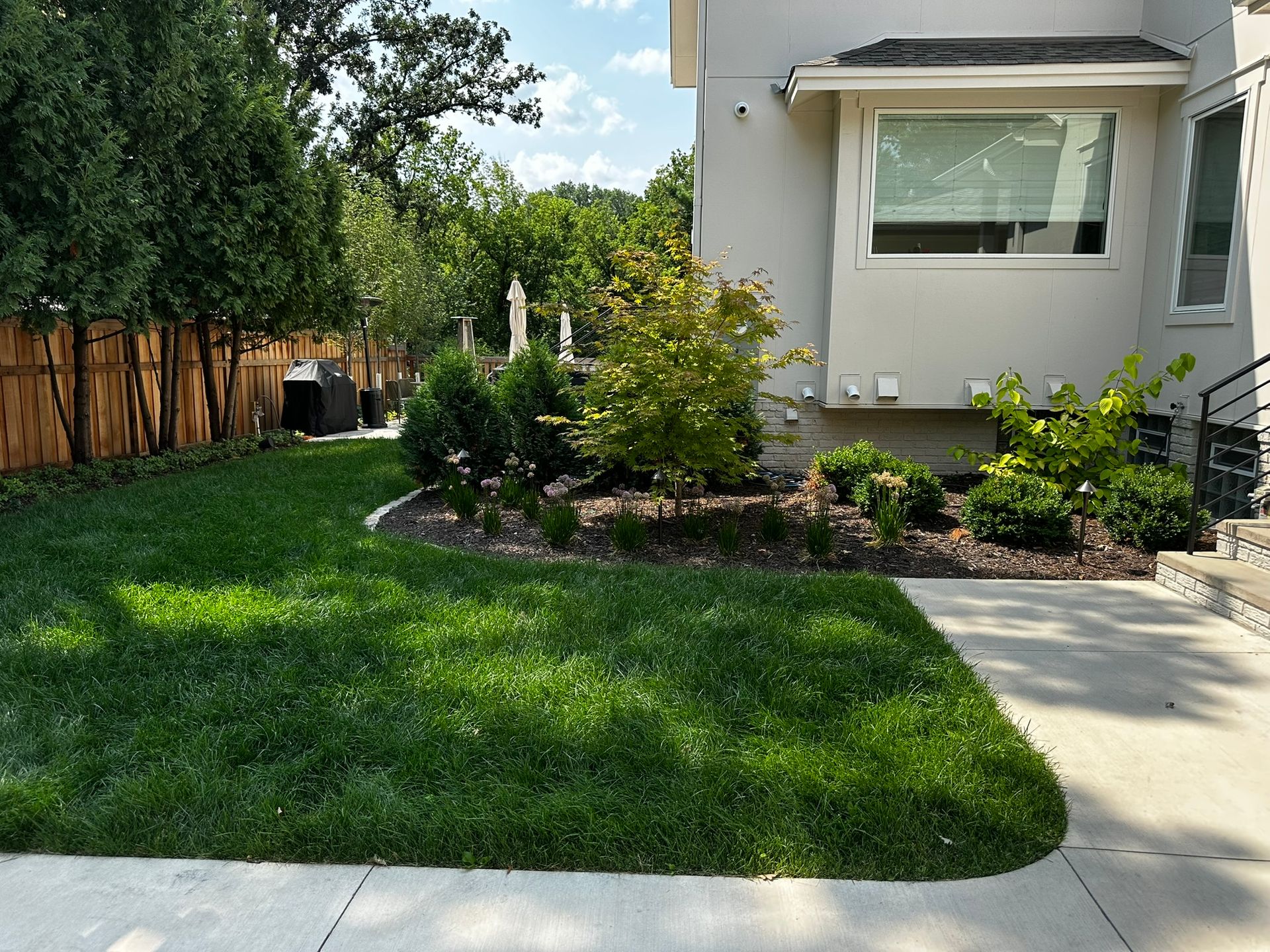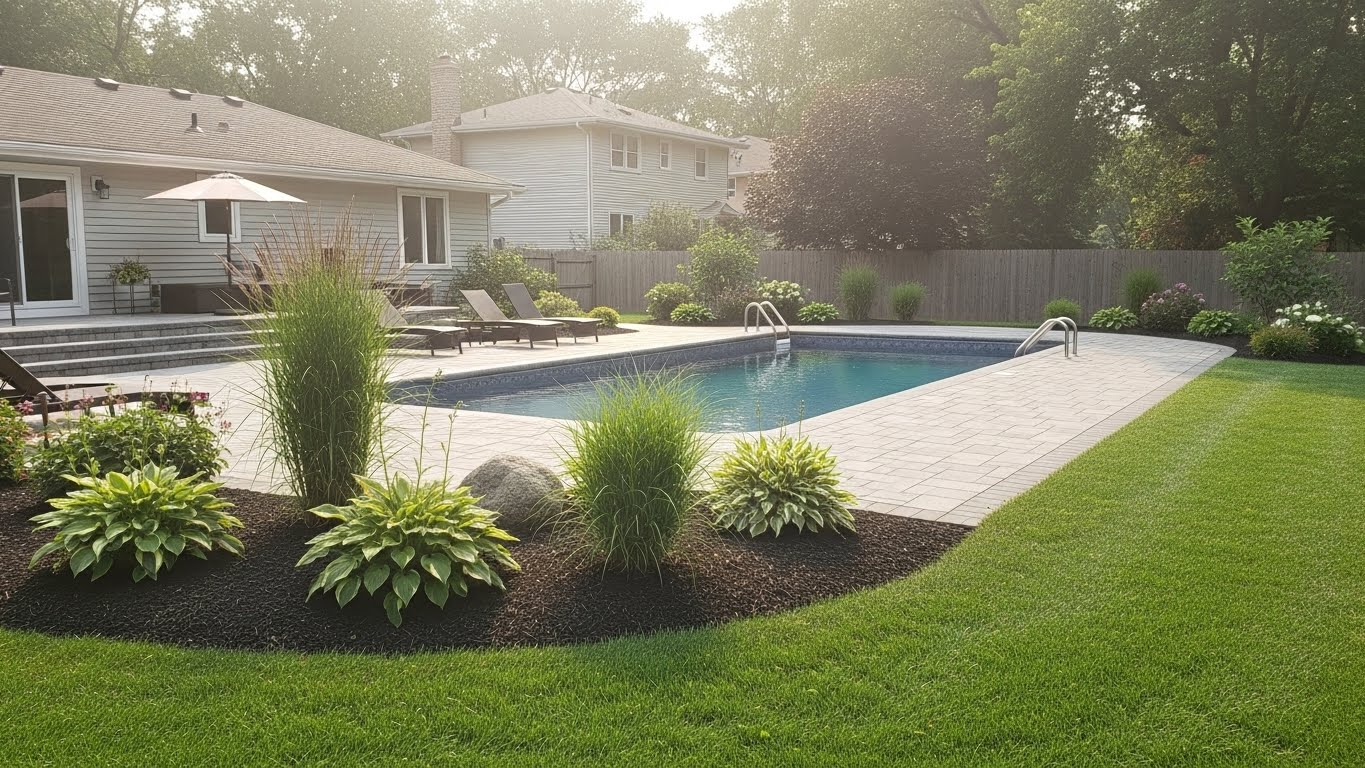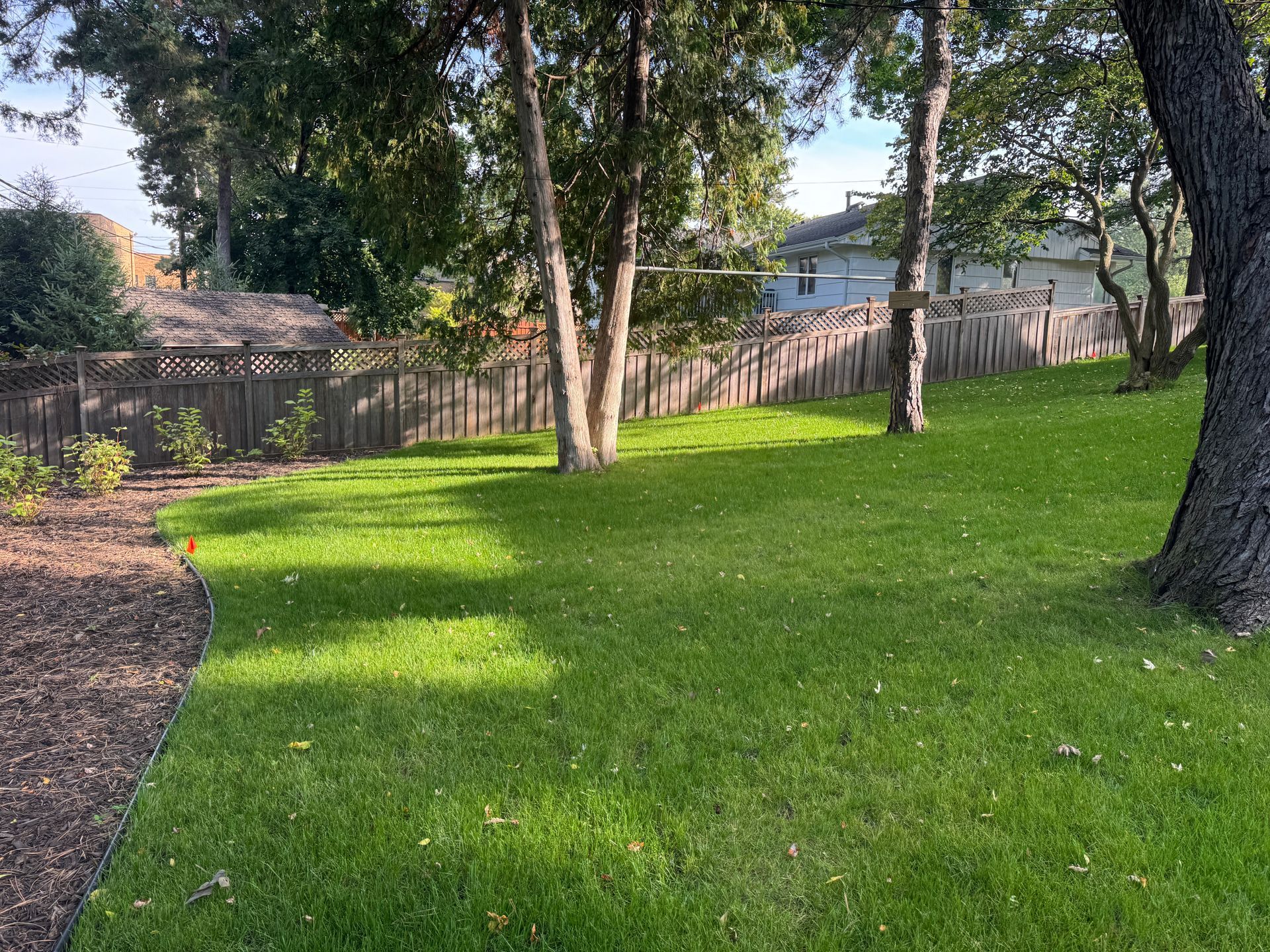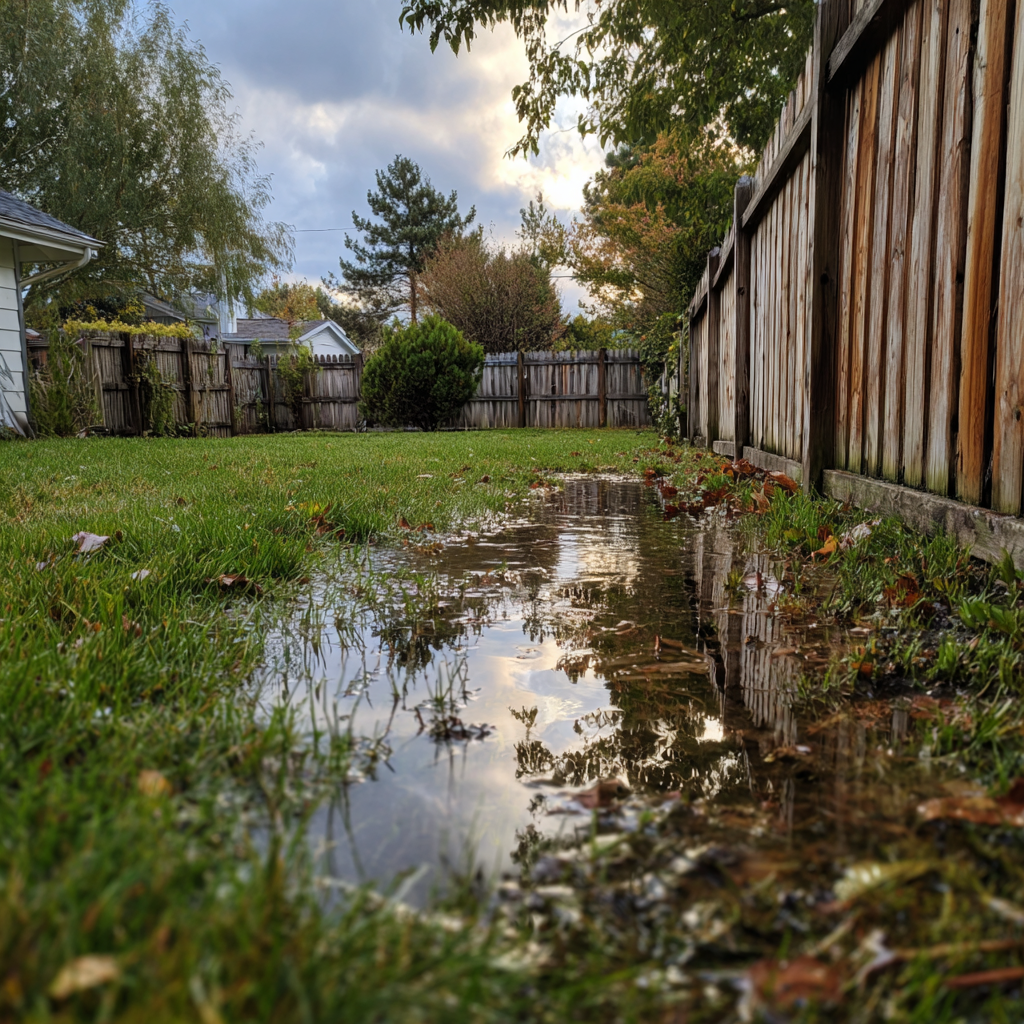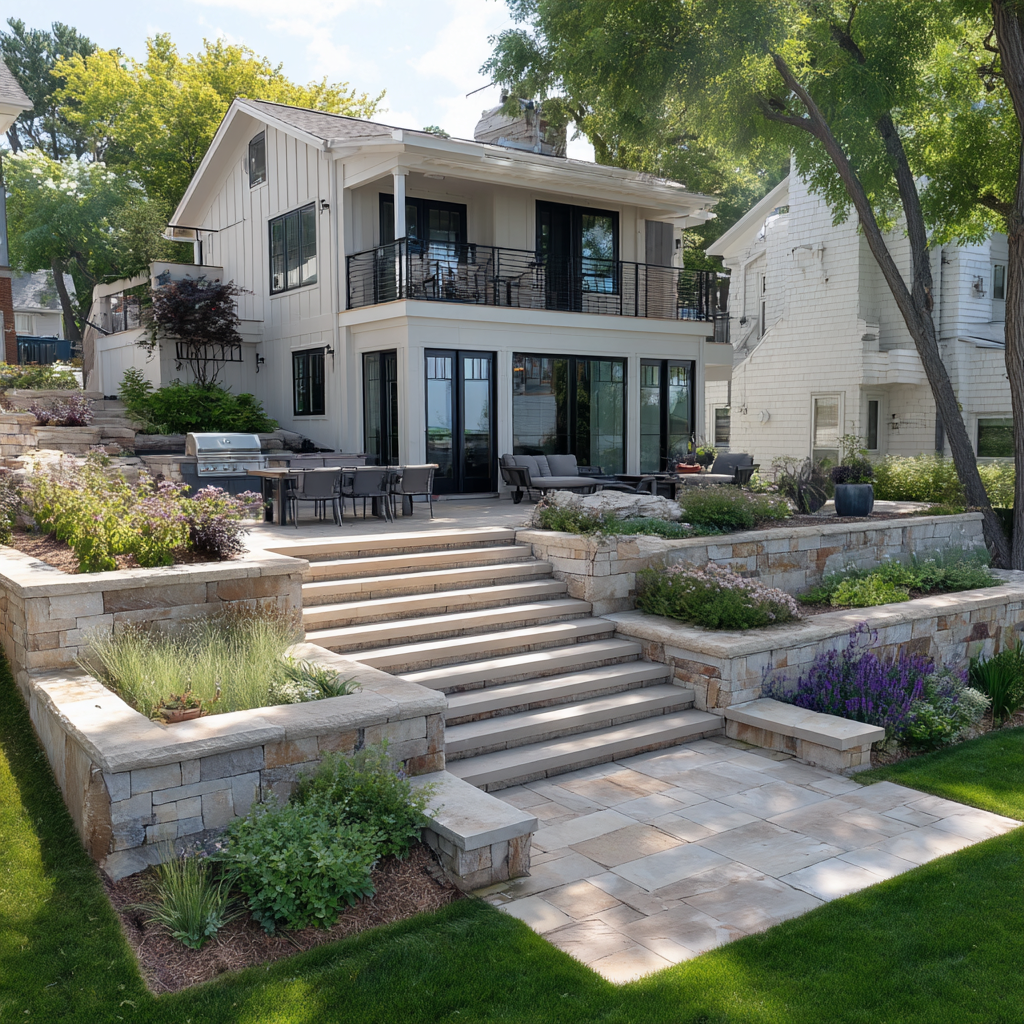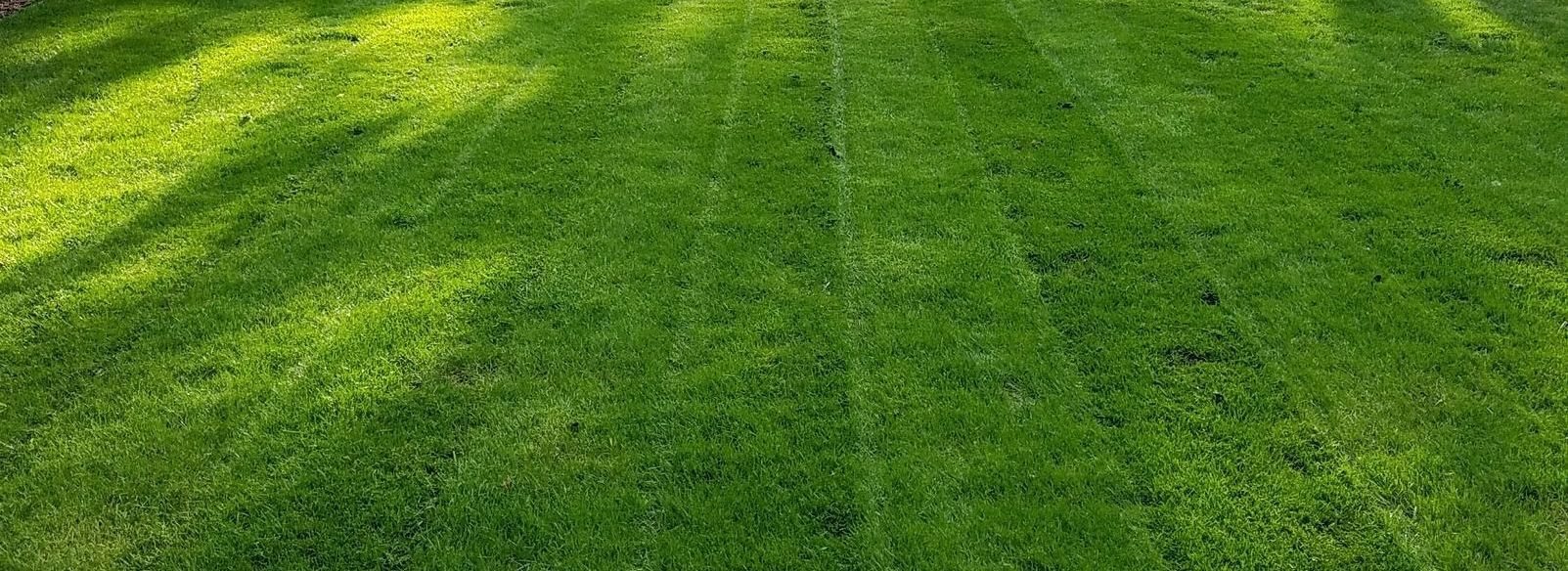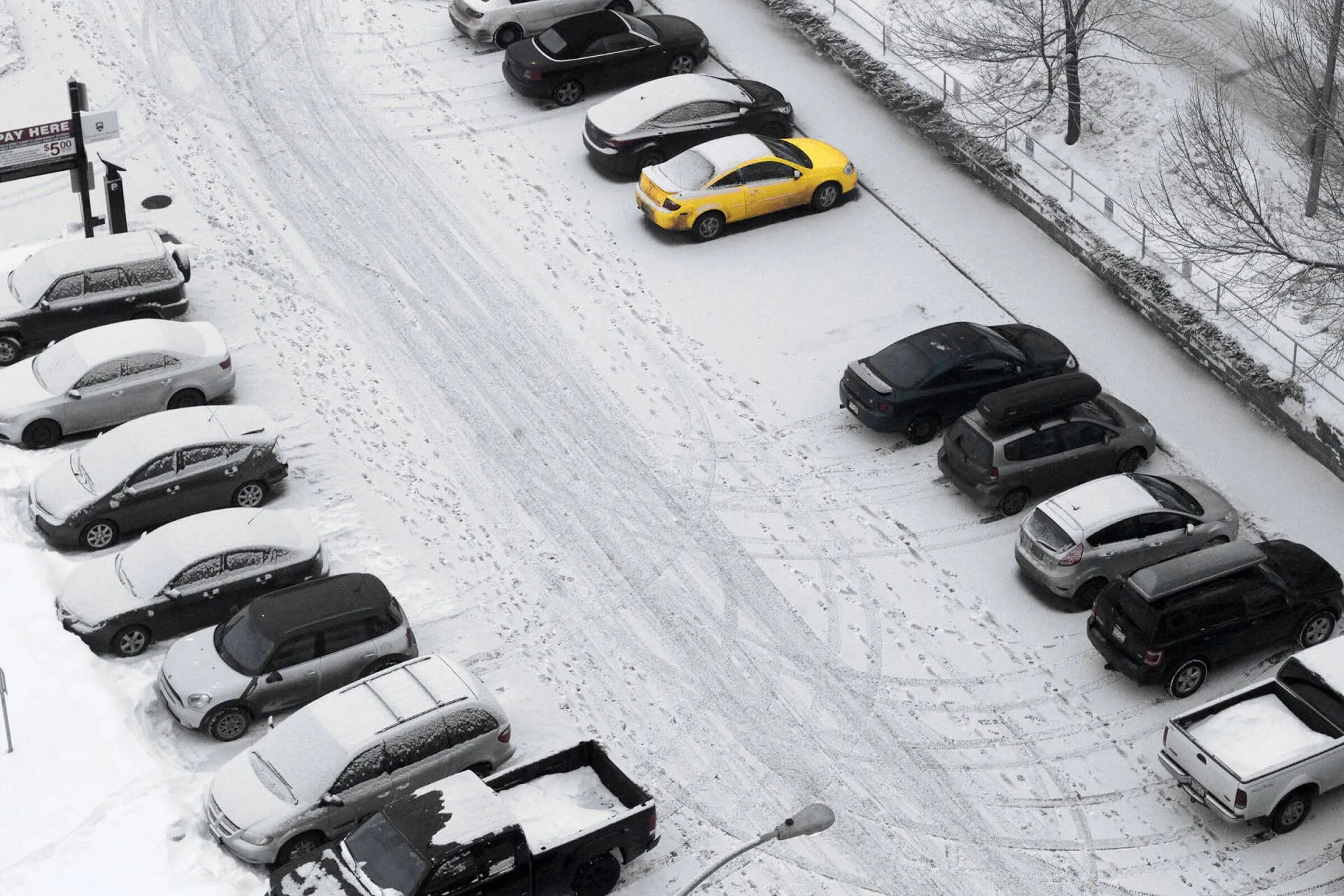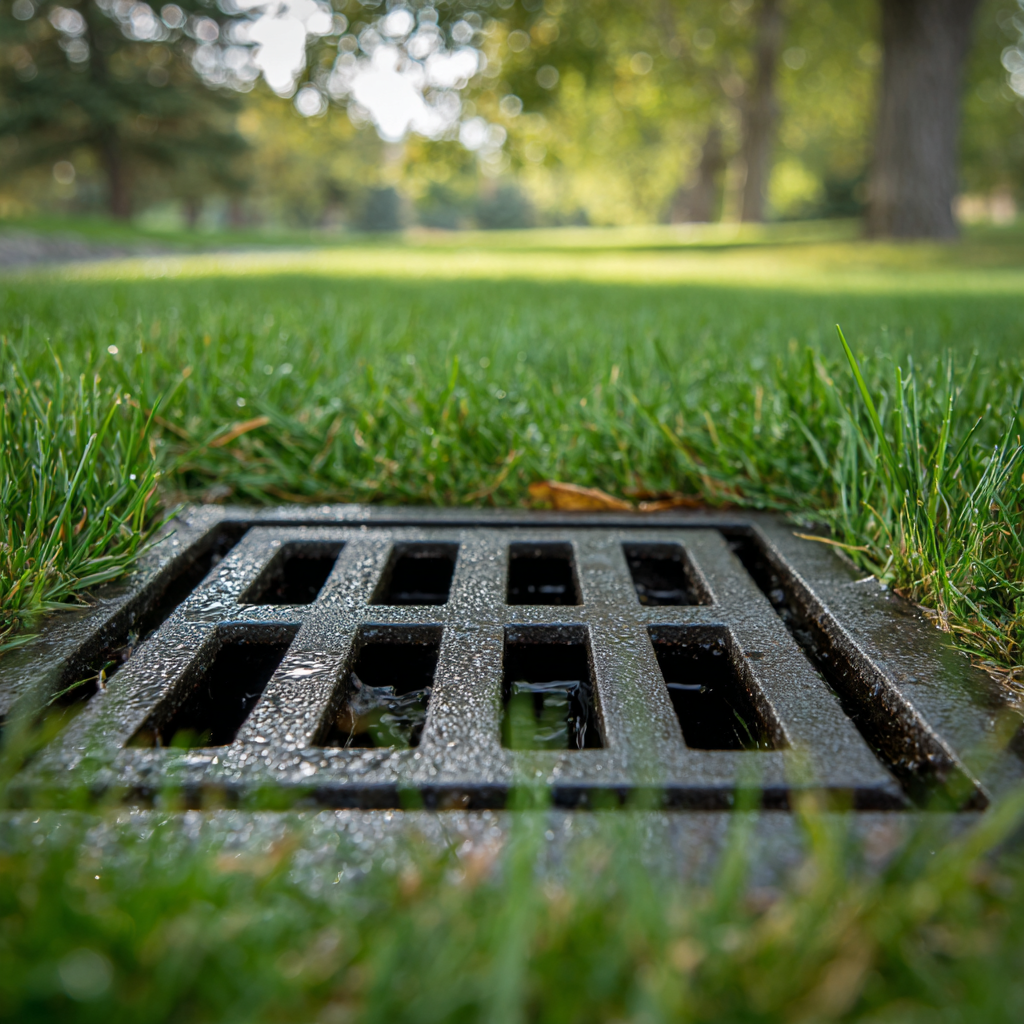Smooth and Improve Your Lawn in Plymouth: The Key to Flatter, Healthier Turf
A Smooth Lawn Is More Than Just Looks

For most homeowners, the first sign their lawn needs help is not the color, it is the feel. You mow across it and the mower jolts over bumps. Kids run barefoot and trip over uneven spots. Furniture wobbles on the patio edge because the ground is not level. A bumpy lawn makes even the greenest turf look neglected. In Plymouth, where clay soils and freeze and thaw cycles naturally create uneven surfaces, this problem is almost universal. The good news is that it is fixable, and not just with cosmetic solutions. The service that makes lawns smoother and healthier at the same time is called topdressing.
Topdressing may sound unfamiliar, but if you have ever admired the perfectly smooth fairways on a golf course, you have seen its results. Golf course superintendents rely on topdressing to keep turf uniform, level, and resilient. Until recently, this was something homeowners rarely had access to. That is changing. At KG Landscape, we invested in professional grade machines like the Earth & Turf 410SP and the EcoLawn Applicator. These machines allow us to deliver golf course quality topdressing on residential lawns in Plymouth.
This service is not about DIY. Topdressing is labor intensive, equipment heavy, and nearly impossible to do well with a shovel and wheelbarrow. Even homeowners with the motivation rarely achieve uniform results. That is why companies that specialize in it are rare. The process is demanding, but when done right, it transforms lawns in ways no other single service can.
By the end of this article, you will understand what topdressing is, how it works, why it matters in Plymouth, and what results you can expect. More importantly, you will see why this is a service best left to professionals and why it is worth every penny for homeowners who want smooth, healthy, golf course quality lawns.
What Exactly Is Topdressing?
Topdressing is the practice of spreading a thin, even layer of compost or soil across the entire lawn surface. The goal is twofold: to level bumps and dips and to improve the health of the turf from the ground up. Unlike fertilizers that feed grass from the surface, topdressing improves the soil itself. Better soil means stronger roots, better germination, and more resilient grass.
For homeowners who have never heard of it, the concept may sound unusual. Why would adding soil on top of grass make it healthier? The answer is in the biology. A thin layer of compost provides organic matter, nutrients, and microbial life that rejuvenate tired soils. It fills in small low spots, gradually creating a smoother surface. When combined with aeration, which opens the soil to receive that compost, the effect is even stronger. Aeration allows compost to filter down into the holes, creating channels for water, air, and roots.
Golf courses use this practice constantly. It is the secret behind fairways and greens that are both perfectly level and able to withstand heavy traffic. For decades, this remained out of reach for most homeowners because the equipment is expensive and the labor is demanding. A wheelbarrow and rake cannot create the uniform distribution needed. The Earth & Turf and EcoLawn machines we use are designed to apply the right amount of material evenly across thousands of square feet.
This is why so few companies offer it. It is not because the science is unproven, it is because the process is too hard without the right tools. That is also why this is not a DIY project. Homeowners who try end up with piles, clumps, or uneven coverage that does more harm than good. With professional equipment and expertise, the process becomes efficient and effective.
Pro Tip: Think of topdressing as skincare for your lawn. A thin layer makes the entire surface smoother, healthier, and more resilient.
The Benefits: More Than Just Smoother Lawns
Most people call about topdressing because they want to fix bumps. That makes sense, and it is the most obvious benefit. A smoother lawn is easier to mow, safer for kids to play on, and more enjoyable for entertaining. But the hidden benefits are just as valuable.
Topdressing improves soil health. The compost or soil layer increases organic matter, which strengthens microbial activity. Healthy soil means roots can grow deeper and stronger. That translates directly into greener, denser turf that withstands stress better.
It also improves water infiltration. In Plymouth, where clay soil often causes puddles, topdressing changes the way lawns absorb water. Instead of sitting on the surface, water filters into the soil more evenly. This prevents soggy areas after rain and reduces runoff.
When combined with aeration, topdressing creates a one-two punch. Aeration relieves compaction, allowing oxygen, water, and nutrients to penetrate. Topdressing fills those aeration holes with compost, delivering organic matter directly where roots need it. The result is a lawn that recovers quickly, grows thicker, and resists drought better.
Topdressing also improves seed germination. If you are overseeding, the compost acts like a seedbed, covering seeds lightly and keeping them moist. This dramatically improves germination rates compared to overseeding alone. For homeowners chasing the perfect lawn, this is the secret to achieving that dense, uniform look.
And then there is the emotional payoff. Walking across a smooth, firm lawn feels different. It feels cared for, like the difference between a gravel road and a paved street. You notice it every time you mow or walk barefoot. That tactile experience is why so many golf course managers swear by it, and why more Plymouth homeowners are investing in it now.
Pro Tip: Combine topdressing with aeration for maximum results. Aeration opens the soil, and topdressing fills it with nutrients and organic matter.

Local Context: Why Plymouth Lawns Need It
Plymouth’s soil profile explains why so many lawns become bumpy over time. The area’s clay content holds water, and freeze and thaw cycles push soil upward in uneven ways. Every winter, water expands in the soil, and every spring, it contracts again. This natural cycle creates humps, dips, and an uneven surface that mowing only makes worse.
On top of that, many Plymouth neighborhoods were developed quickly, and builders often left poor quality fill soils around new homes. Those soils settle unevenly for years. The result is a lawn that feels rough underfoot, no matter how much you fertilize or water.
Different parts of the Twin Cities show the same issues in different ways. In Edina, estate lawns demand perfection. Homeowners expect turf that is not just green but pristine, level, and professional looking. In Minneapolis, compact urban lawns suffer from heavy foot traffic and lack of aeration, making them prime candidates for topdressing. In Minnetonka, lakefront lawns deal with erosion and settling from water tables. In every case, topdressing addresses problems that fertilizers and mowing never solve.
In Plymouth specifically, the combination of clay soil and construction fill means topdressing is more than cosmetic. It corrects years of natural and man made settling, creating a smooth, safe surface. Parents notice it immediately when kids stop tripping over dips. Homeowners notice when mowing becomes easier and more even. And everyone notices when the lawn suddenly looks like something out of a golf course brochure.
Pro Tip: Lawns in Plymouth often settle unevenly after home construction. Topdressing is the fastest, most effective way to correct those bumps.
The Process: How Professionals Do It Right
Topdressing follows a series of precise steps. It begins with aeration. Aeration machines remove small plugs of soil from the lawn, creating thousands of tiny holes. These holes relieve compaction and open pathways for air, water, and nutrients.
Next comes the topdressing material itself, usually compost or a compost-soil mix. With machines like the Earth & Turf 410SP or EcoLawn Applicator, the material is spread evenly across the lawn. This even coverage is critical. Too much material smothers grass. Too little does not provide benefits. The machines deliver a consistent layer, thin enough to let grass grow through but thick enough to level bumps.
After application, the material is lightly brushed or raked to settle it into the lawn and into the aeration holes. This integration ensures the compost reaches the root zone where it does the most good. If overseeding is part of the plan, seeds are applied at this stage and benefit from the moisture holding layer.
The final step is watering. Keeping the soil moist helps compost integrate and ensures seed germination. Homeowners usually start to see smoother lawns within a few weeks, and by the end of the season, the turf is thicker, healthier, and more level.
The difference between professional and DIY here cannot be overstated. A homeowner with a wheelbarrow cannot achieve the same uniform spread. Uneven piles create worse bumps than before. That is why specialized machines matter. They deliver results that match golf course standards and make the service worthwhile.
Pro Tip: Choose a company that owns professional topdressing equipment. Without it, you will never get the uniform results that make this service transformative.
Cost, Value, and Long Term Results
Topdressing is more expensive than basic lawn care services like fertilization or aeration, but the value goes far beyond short term results. Think of it as a long term investment. While fertilizer feeds grass for a season, topdressing changes the soil itself. That improvement carries forward year after year.
The cost varies depending on lawn size and whether aeration or overseeding are included, but in every case, the value is clear. A smoother, healthier lawn reduces the need for frequent repairs, patch seeding, and even some irrigation adjustments. For homeowners in Plymouth, where properties are valuable and curb appeal matters, the ROI is significant.
There is also a lifestyle factor. A smooth, firm lawn feels better to use. Families notice when play areas become safer and more comfortable. Entertaining is easier when furniture sits level. And homeowners simply enjoy walking barefoot across a yard that feels like a golf course.
Few companies in Minnesota invest in the equipment to do this right. That makes it a unique, premium service. When you hire a contractor who offers professional topdressing, you are getting results most homeowners never realize are possible. That exclusivity is part of the value.
Pro Tip: A single topdressing treatment can transform a lawn, but annual or biennial treatments deliver the best long term results.
FAQs
What exactly does topdressing do for a lawn?
Topdressing fills in bumps, improves soil structure, and adds organic matter that strengthens turf from the ground up. It creates a smoother, firmer surface while improving water infiltration and nutrient availability. Over time, this makes lawns healthier, denser, and easier to maintain.
How often should topdressing be done in Plymouth?
Most homeowners see dramatic results after one treatment, but the best results come from repeating the service every one to two years. Annual or biennial applications keep lawns level and continually improve soil health.
Can topdressing fix drainage problems in a yard?
Topdressing helps with water absorption by improving soil structure, but it is not a substitute for full drainage systems. It corrects surface level bumps and minor water issues, but standing water or slope problems require professional drainage solutions.
How soon will I see results after topdressing?
You will notice smoother mowing and walking within a few weeks. Full turf improvements, including thicker and greener grass, usually appear over the course of the growing season.
Is topdressing safe for pets and kids?
Yes. The compost or soil used in topdressing is safe, natural, and free of harmful chemicals. Once applied, it blends into the turf quickly and is safe for families to enjoy.
What makes professional topdressing different from DIY attempts?
The difference is equipment and expertise. Professional machines distribute material evenly, something nearly impossible to achieve with wheelbarrows and rakes. The results are uniform, smooth, and long lasting.
How much does topdressing typically cost in Plymouth?
The cost depends on lawn size and scope, but it is higher than standard aeration or fertilization. Homeowners often invest in topdressing because it delivers unique results that no other service can match, creating smoother, firmer, healthier turf.

